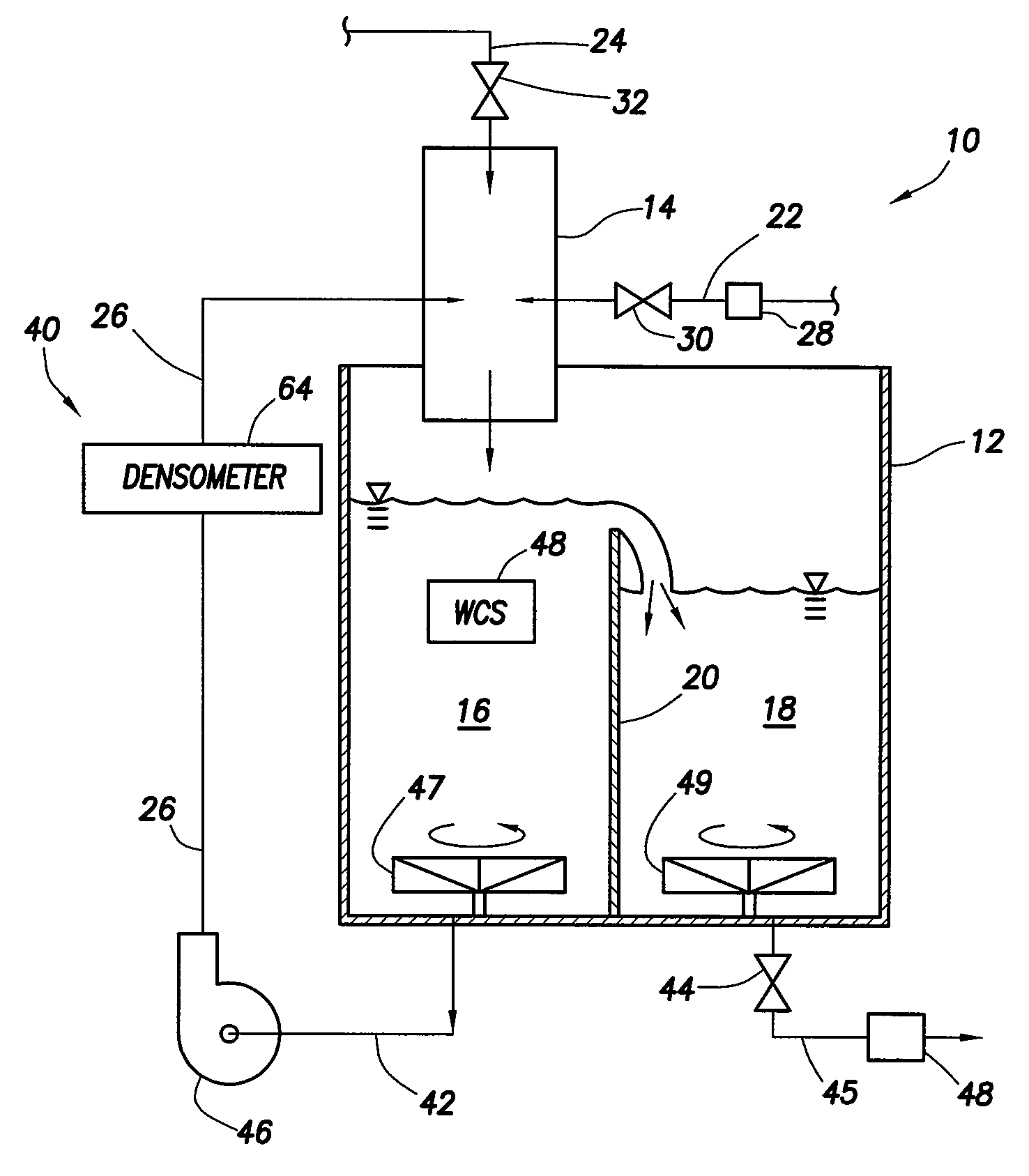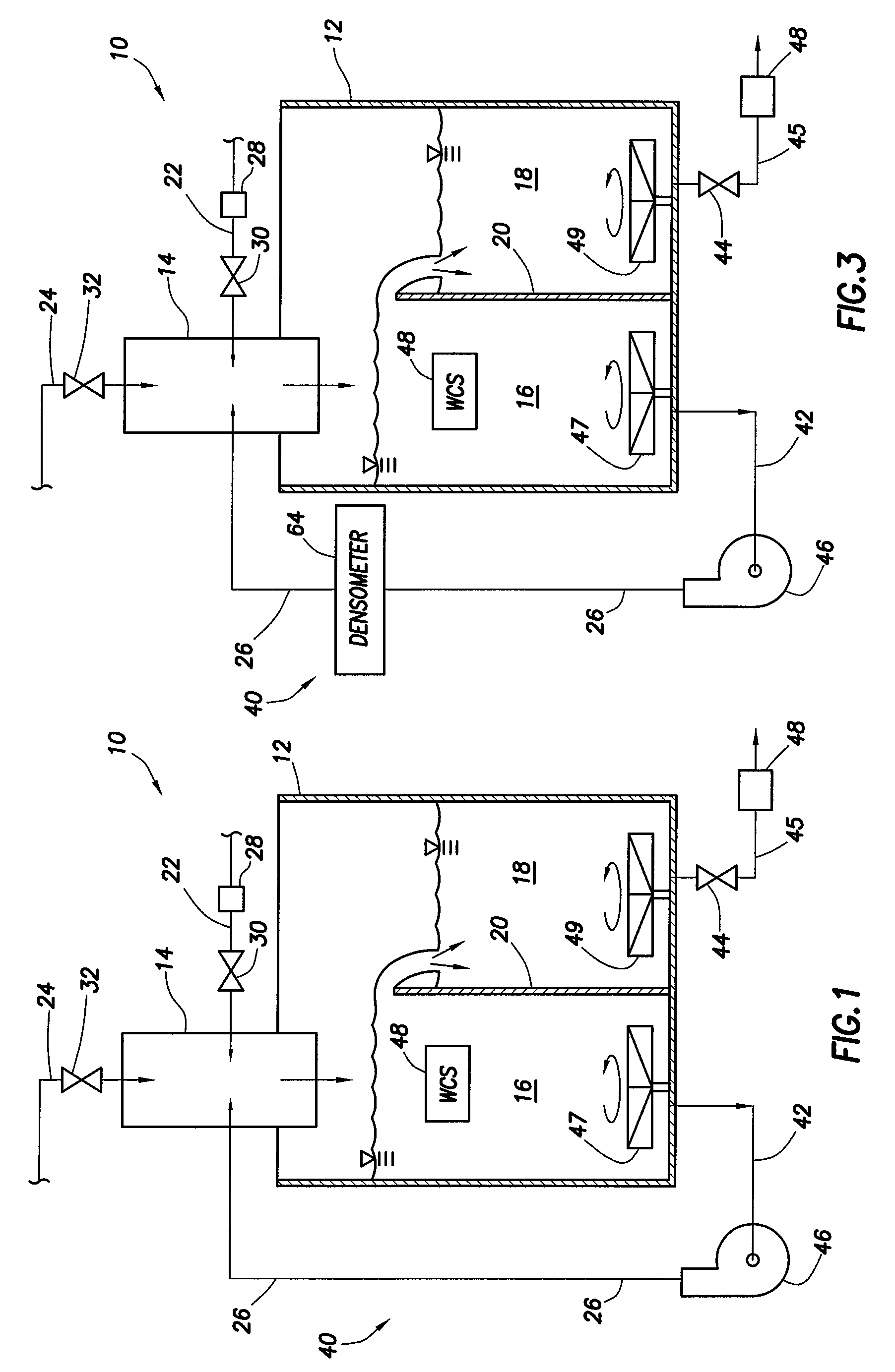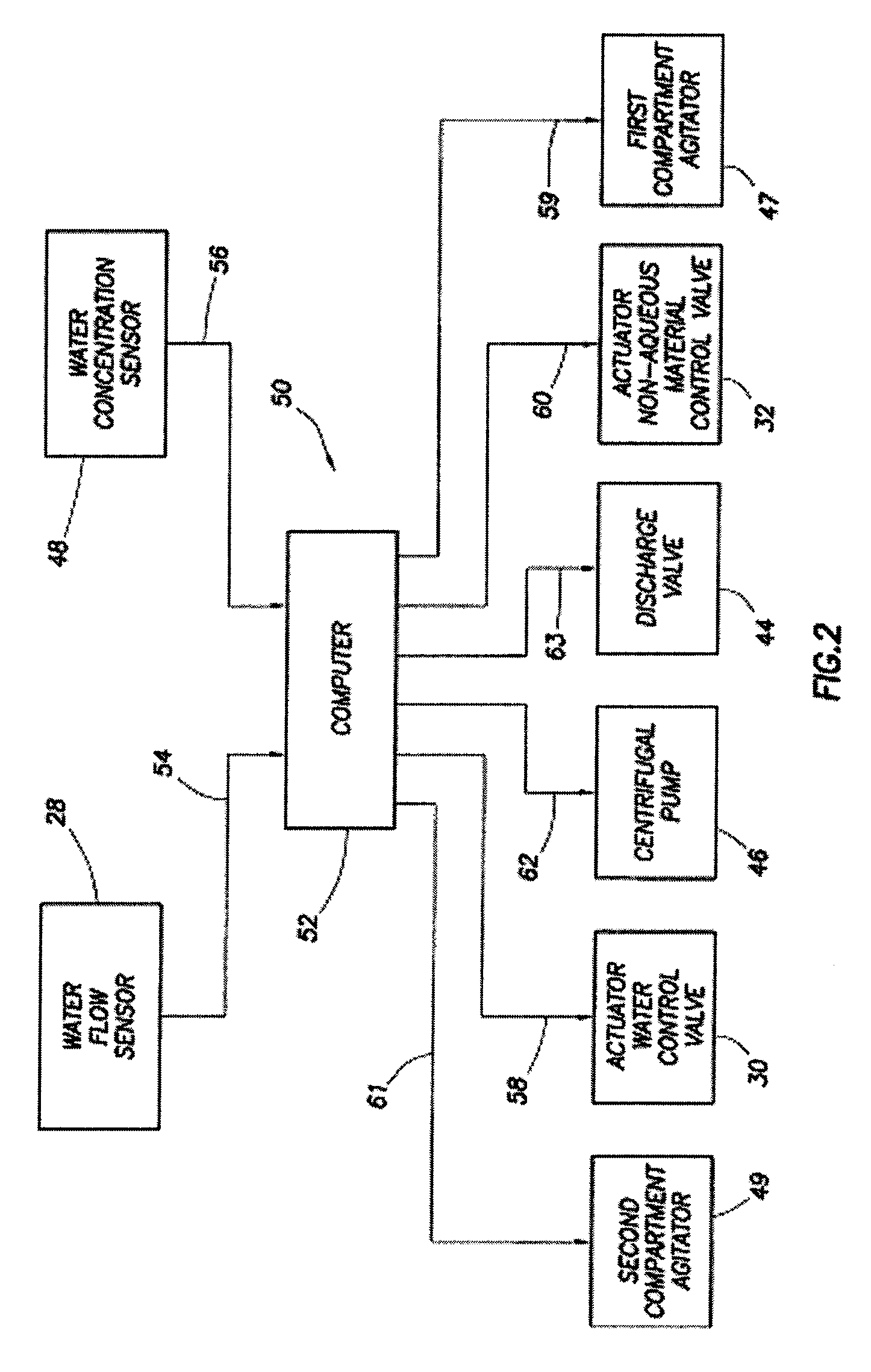System and method for mixing water and non-aqueous materials using measured water concentration to control addition of ingredients
a technology of measuring water concentration and mixing system, which is applied in the direction of non-electric variable control, process and machine control, instruments, etc., can solve the problems of inability to accurately control the ratio of non-aqueous materials to water, the disadvantage of adding equipment and flow lines to the mixing system, and the density-based control system not working well. , to achieve the effect of reducing the space required for operating equipment, and reducing the amount of operating equipmen
- Summary
- Abstract
- Description
- Claims
- Application Information
AI Technical Summary
Benefits of technology
Problems solved by technology
Method used
Image
Examples
Embodiment Construction
[0017]The details of the present invention will now be described with reference to the accompanying figure. Turning to FIG. 1, a system for mixing a fluid comprising water and at least one non-aqueous material is referred to generally by reference numeral 10. The system 10 comprises a mixing tub 12 and a mixing head 14. The mixing tub 12 has two compartments 16 and 18, which are separated by a weir 20. The mixing head 14 is placed over the first compartment 16, which is referred to as the pre-mix side. The fluid mixture, or slurry, is discharged from the second compartment 18, which is referred to as the down-hole side.
[0018]In one certain embodiment, the mixing head 14 is a Halliburton RCM II, RCM IIe, or RCM IIIr mixing head. As those of ordinary skill in the art will appreciate, however, other suitable mixing heads can be used. In its simplest embodiment, the mixing head 14 has three input ports for receiving inputs from flow lines 22, 24, and 26, respectively. However, as those ...
PUM
| Property | Measurement | Unit |
|---|---|---|
| densities | aaaaa | aaaaa |
| density | aaaaa | aaaaa |
| density | aaaaa | aaaaa |
Abstract
Description
Claims
Application Information
 Login to View More
Login to View More - R&D
- Intellectual Property
- Life Sciences
- Materials
- Tech Scout
- Unparalleled Data Quality
- Higher Quality Content
- 60% Fewer Hallucinations
Browse by: Latest US Patents, China's latest patents, Technical Efficacy Thesaurus, Application Domain, Technology Topic, Popular Technical Reports.
© 2025 PatSnap. All rights reserved.Legal|Privacy policy|Modern Slavery Act Transparency Statement|Sitemap|About US| Contact US: help@patsnap.com



